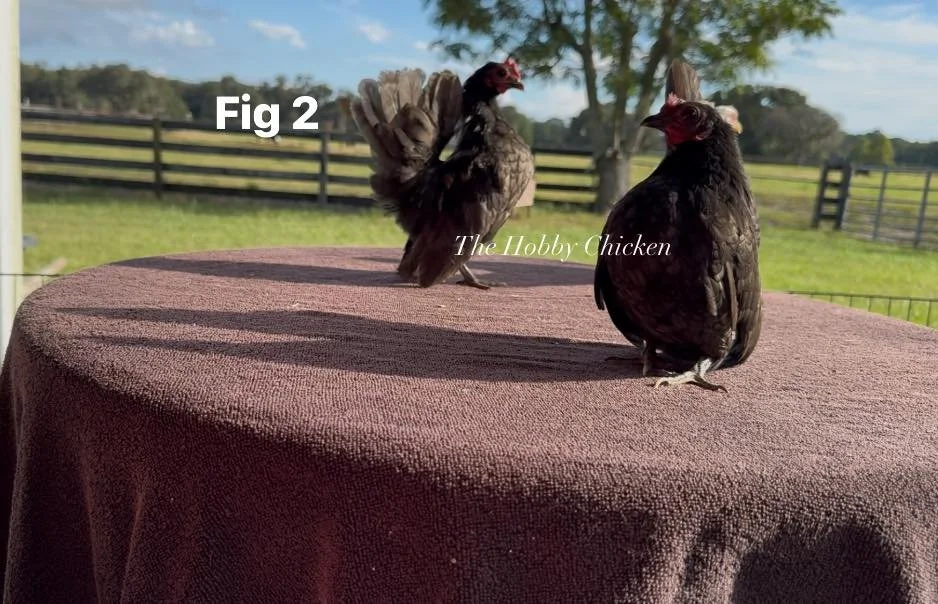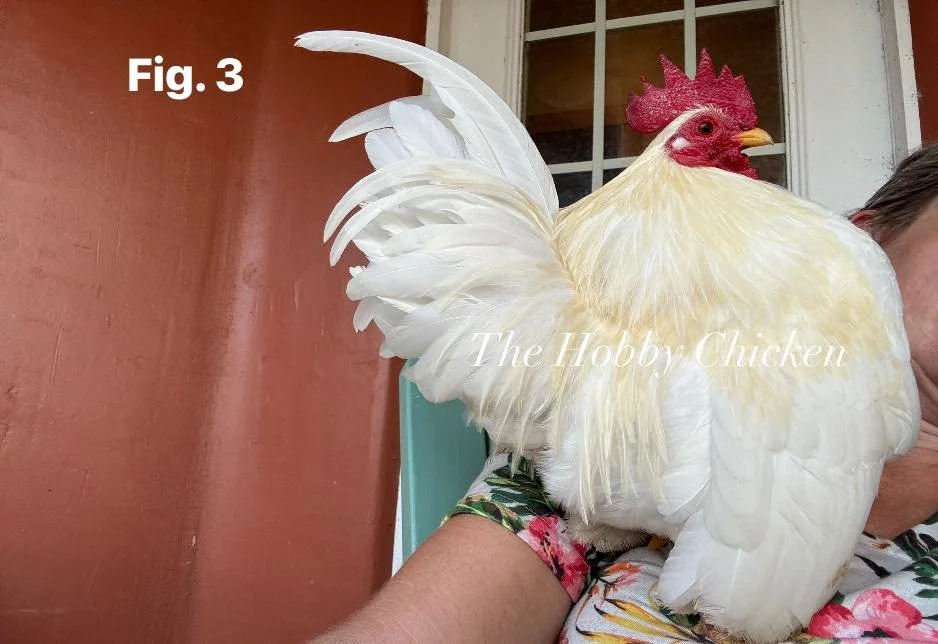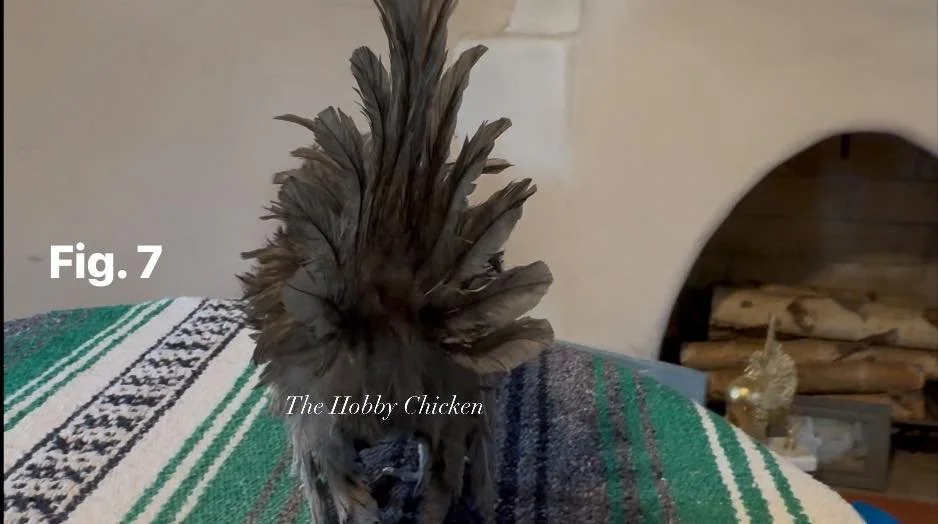Serama Series 4 - Tails
For this installment of our Serama Series, we’re going to talk about the tail of an American or Traditional Serama.
The Standard calls for an upright tail — one that is upright enough it almost touches the back of the bird’s head. Males should have sickle feathers that “slightly curve.”
Some faults in the tail include sickle feathers that have too much curve or a pinched tail. The sickles should not resemble those of an Old English Game Bantam. Another fault is a tail angle that is too low.
Disqualifications include wry tail and squirrel tail.
Wry tail is when the bird has a curve in the spine at the base of the tail — think scoliosis. The tail then leans to one side or the other instead of staying centered. In wry tail, the tail cannot cross the bird’s center line and go to the opposite side. You can test your bird to determine whether it has wry tail or just a leaning tail — neither of which should be bred.
Squirrel tail is when the tail leans too far forward toward the bird’s head rather than being vertical. Sometimes, a bird may appear to have a squirrel tail due to being very tight-backed. It’s important to look at the base of the tail to see which direction the feathers grow.
Think of a tree: the trunk can be perfectly vertical while the branches curve, and that’s fine. But if the trunk itself leans — that’s where the problem lies.
When viewing the bird from behind, you want to see a nice A-frame shape. You don’t want to see a pinched tail.
Let’s get into it with photos.
Figure 1: These two girls have pinched tails. See how both sides of their tails are very close together from top to bottom? We don’t want that.
Figure 2: The female on the left has a squirrel tail. See how the base of her tail grows toward her head? This is undesirable.
Figure 3: This male’s sickle feathers are a bit too curved. I’d like to see just a bit less curve. They aren’t horrible, but they could definitely be better. His tail also isn’t as full as I’d like; it looks somewhat disproportionate to his body.
Figure 4: This male has a nice curve to his tail feathers. We don’t want them straight as a board — a slight curve is ideal.
Figure 5: This male has a very nicely upright tail. His sickle feather is straight as an arrow, and he has a nice spread of feathers from the top sickle all the way down to the last feather.
Figure 6: This male is frizzled, which causes his tail feathers to curl a bit. Sometimes they can even curve toward the head. When that happens, it isn’t necessarily squirrel tail.
Figure 7: This young male has a very nice A-frame-shaped tail when viewed from behind. This is what you want to see on both males and females.
Figure 8: These ladies are sporting some lovely A-frame tails. The second from the right is especially nice.
Check out the other articles in the Serama Series:









